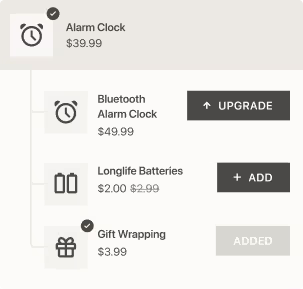Building your own e-commerce store on Shopify may seem a bit complicated at first. Figuring out what theme to start with, what sections to add to the homepage, how to set up analytics, connect pixels, set up taxes, etc. is overwhelming.
On top of that, you have to figure out what apps to install, how to set them up, whether they’re worthwhile, and whether they meet your requirements. Are you now deciding which apps to install and which ones you need to get your e-commerce store up and running? Check out our list of recommended Shopify apps that are suitable for both new and experienced merchants.
1. ShipStation (shipping)
If you are a merchant from North America, we recommend using ShipStation. Shipstation is one of the biggest shipping softwares in the world that will let you access more than 90 carriers and logistics partners.
Why choose ShipStation:
- ShipStation offers affordable and well-negotiated shipping rates
- All shipping processes can be almost fully automated
- Ship all over the world - US, UK, Canada, Australia, or France
- Multi-location warehouses supported
- Brand the entire logistics experience - from branded notifications to a return portal
- And more!
ShipStation has been a proven solution for a few years now and will definitely be a great choice when starting out! ShipStations has its own app published on the Shopify App Store, which has very positive reviews. The app might seem a bit older, but it is functional, does what you need it to do, and even provides clean dashboards for tracking and analytics.
Packeta (shipping)
If you're a European merchant, Packeta is definitely worth a look. It has over 11,500 drop-off locations and 90,000+ partner drop-off locations. Once you register with Packeta, we recommend taking advantage of all the carriers it can connect you to. You also get access to its pick-up locations across the EU, which is a huge advantage and a popular method for customers to pick up their goods.
That’s why our first tip for your starter Shopify tech stack is our Packeta app, which allows you to send your order directly into Packeta, making it easy to ensure all packages are dispatched. Setting up the app is simple. The actual transfer of orders can be done in two ways: either by exporting/importing a CSV file or automatically via an API connection.
The basic plan costs only $9.99 per month and allows you to connect your store to Packeta, enable a pop-up post-purchase to let your customers choose their pick-up point, automatically remind them of unselected pick-up points, and export a CSV file with selected orders. It’s an app that makes it easy and inexpensive to deal with fulfillment by connecting to one of the largest European logistics systems. You can give it a try for 5 days free of charge.
2. Judge.me (product reviews)
Reviews play a vital role in any online business. They are an essential type of social proof that helps convince customers to buy your product, not a competitor’s.
Most review apps on Shopify are expensive and rather complicated to set up or manage. Judge.me is one of the few that can provide you with the review functionality you need, inexpensively. With its help, you’ll be able to:
- Automatically send email requests for reviews
- Customize the email and create custom surveys
- Use pre-built sections to display reviews in the theme editor
- Import reviews from other platforms
- Link reviews to products in Google search

At the beginning, you can confidently get by with the free plan. It includes most of the features you’ll need. Then, if you decide to link reviews to Google Shopping or create custom questionnaires for your review requests and forms, you can’t avoid upgrading to the Awesome plan, which costs $15 per month. That’s still significantly less than what you’d pay for similar apps in the Shopify ecosystem like Yotpo, Okendo, or Junip.
Want to learn more about the power of reviews? Learn all about reviews and their effect on conversions from our blog post.
3. Mailchimp (email marketing)
Email is a very important marketing channel for all online stores. Be sure not to underestimate it at the first stages of your business. Email marketing is very effective for the retention of your customers and a way to stay in touch with them after the purchase.
The best option for merchants starting out is Mailchimp. It provides sufficient segmentation and automation options, it syncs well with data in your Shopify admin, and it won’t break the bank.
Once your online store starts getting some traction and becomes more complex from a technical standpoint, switching to a new email marketing partner is almost inevitable. In the case of Shopify, the best choice would be Klaviyo, which has integrations with the biggest apps in the Shopify ecosystem and is very compatible with Shopify itself.
There has been a long-standing partnership between Shopify and Klaviyo for a few years now, and with Shopify’s recent investment in Klaviyo, it will likely continue to grow, which is great for Shopify merchants and partners.
4. Metafields Guru (metafield management)
Metafields are an integral type of content in any Shopify store. They help with easy filtering on the collections page, dynamic content, and more. Unfortunately, in Shopify admin, metafields can only be managed individually, and you don’t have an overall view of all created metafields anywhere.
The Metafields Guru app has been around for a few years now and helps with the administration of this content. So what exactly does Metafields Guru do?
- Offers a clear administration of all the metafields you are using
- Provides bulk import and export of metafields
- Gives an Excel editor for clear editing of metafield content
- And much more
In case you just want a better view of metafields, the app is free. When using features like bulk import/export or the Excel editor, you will have to pay $9 monthly.
5. Order Printer Pro (invoicing)
Invoicing is another part of your e-commerce business that you can’t avoid and need to set up through a reliable and efficient solution.
Generally speaking, invoicing orders through Order Printer Pro will be the best option. This app allows you to set up the following processes:
- Automatically create invoices, packing slips, commercial invoices, return forms, and more
- Let customers download PDFs of invoices directly from the order confirmation email
- Automatically cancel invoices when an order is canceled on Shopify
- And much more
Plus, it’s compatible with multi-currency stores and Shopify Markets functionality.
Order Printer Pro costs $10/month and gives you a complete invoicing solution. This app will be sufficient for you to continue to grow your online store, even if you decide to expand.
6. Koongo (product feeds)
Marketplaces and price comparison sites are great sales channels and a way to increase product distribution right from the start. However, connecting to these channels requires fine-tuned XML feeds, which are not easy to create and manage.
An approved application to automatically generate these feeds is Koongo, which offers you the following features:
- Easily created and filled in product feeds for channels like Zalando, Amazon, Glami, Favi, and dozens more
- Ability to remove and replace values in the XML feed with your own specified value or other dynamic data
- Possibility to edit the XML feed format and add custom tags
- Filtering of products in the XML feed according to dozens of different criteria

The Koongo app offers valuable features at $24/month. This includes 2,000 items, which should be sufficient. If not, it costs only $4 more to get extra 1,000 items listed in your product feeds. Koongo might not be as cheap as the other solutions we listed in this tech stack, but it is an integration that you will most likely continue to use throughout your Shopify journey.
7. Candy Rack (upselling)
AOV (average order value) is an important e-commerce metric for analyzing your profitability, and we recommend optimizing it from the get-go. In fact, any Shopify merchant can take advantage of sales methods like upselling and cross-selling.
Candy Rack will help you to easily achieve higher sales through a pop-up on the product page that will offer the customer additional complementary products to purchase using a unique AI algorithm.
Starting at $29.99/month, you can get access to the following functionality:
- AI algorithm that offers relevant products to the customer to seamlessly add to their cart
- Ability to customize offers based on product tags, prices, titles, and more
- Ability to edit the upsell pop-up through a simple but effective editor built right into the app
- Option to upsell a free gift, fast shipping, or anonymous delivery

The app is not a cheap option to start with, but the return on investment is like no other out there. All it takes is 3-4 orders with an upsell from Candy Rack—and you’ll have your fee back. It’s free to try for 2 weeks, so you can experience the power of upsells and cross-sells without worry.
For crafting converting offers, check out our 10 tips for upselling on Shopify.
8. Shopify Flow (automations)
The last app we recommend to every Shopify merchant is Shopify Flow. It helps you automate a large variety of processes that would normally take you hours of manual work. It’s a great tool to optimize your time and capacities, which you can use for improving your marketing campaigns and promoting your products. Flow is such a powerful app that it can even delay the need to hire your first employee or part-timer.
Flow is a native app from Shopify and is completely free. Its only downside is that it’s only available on a Shopify plan and higher (you would have to upgrade from the Basic plan).
Examples of processes you can automate with Flow:
- Email notifications when a customer makes an order (specified through a tag, order price, name country, etc.)
- Order labels based on almost any criteria
- Tagging of customers based on specific purchase behavior (e.g. spent more than $100)
- Orders sent to your suppliers in case of out-of-stock or low inventory
- And much more!

Apps are one of the main reasons why Shopify is so exceptional as an e-commerce platform. We hope this Shopify tech stack helps you launch your first Shopify store successfully or complete the list of apps you already use on a running store.

















